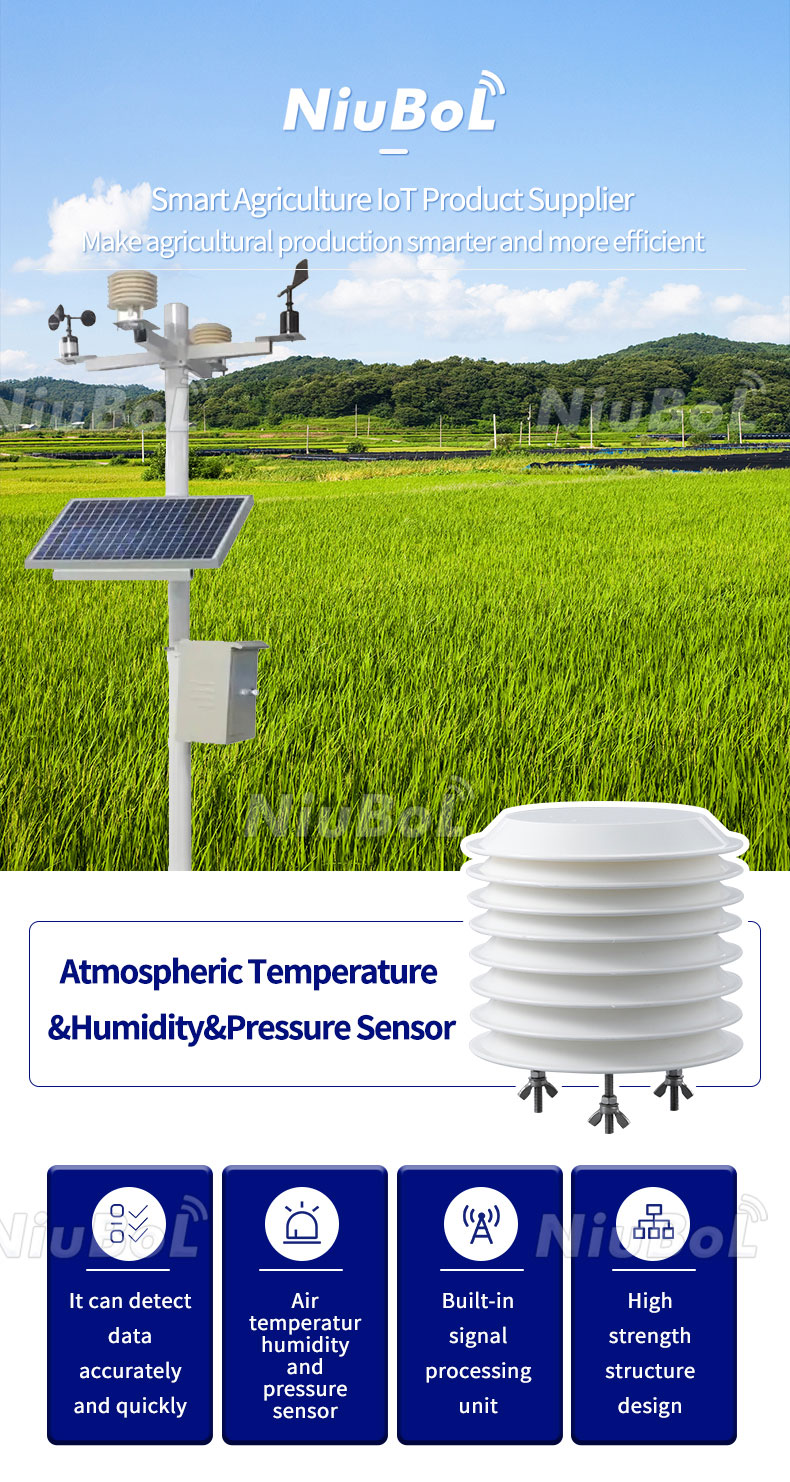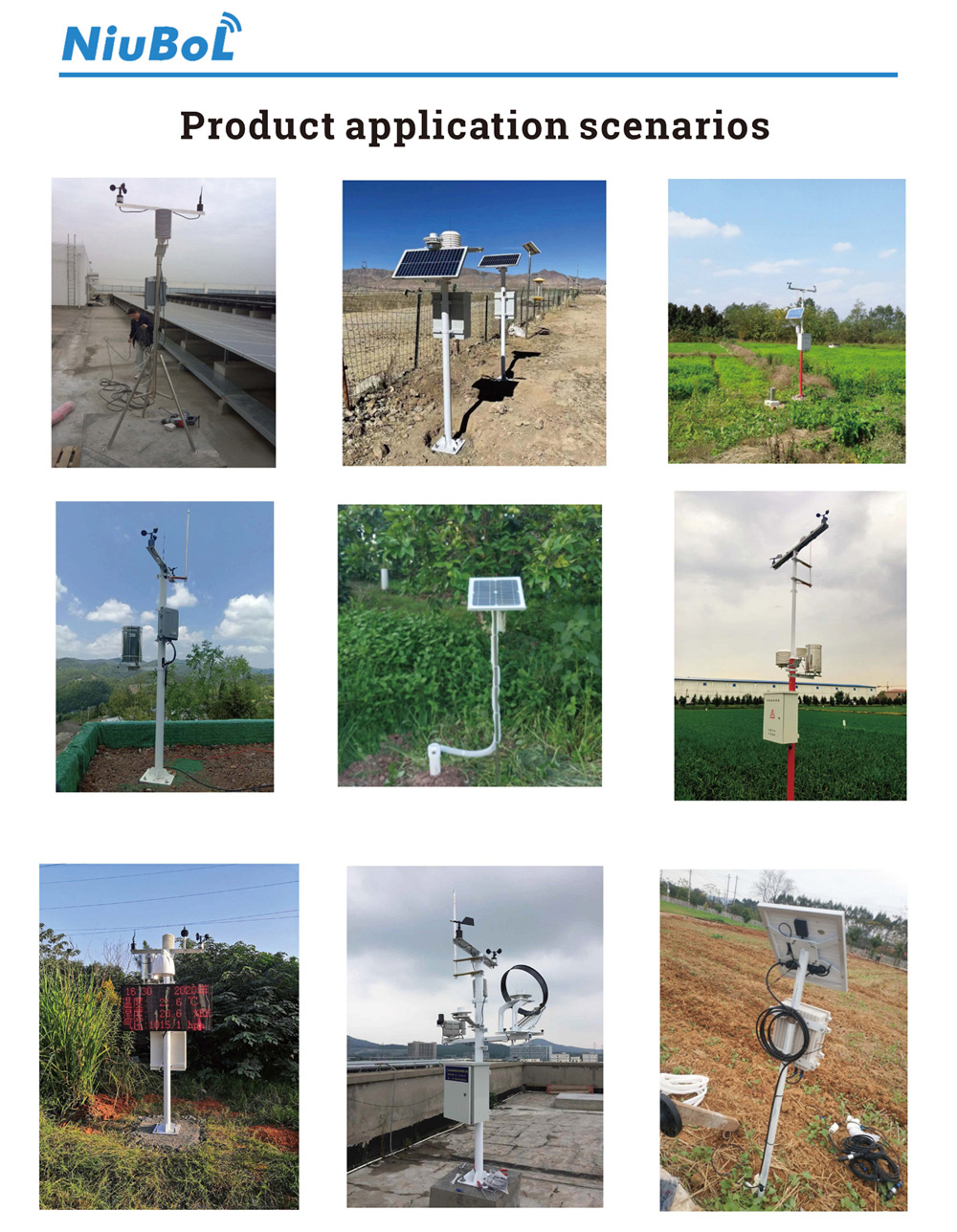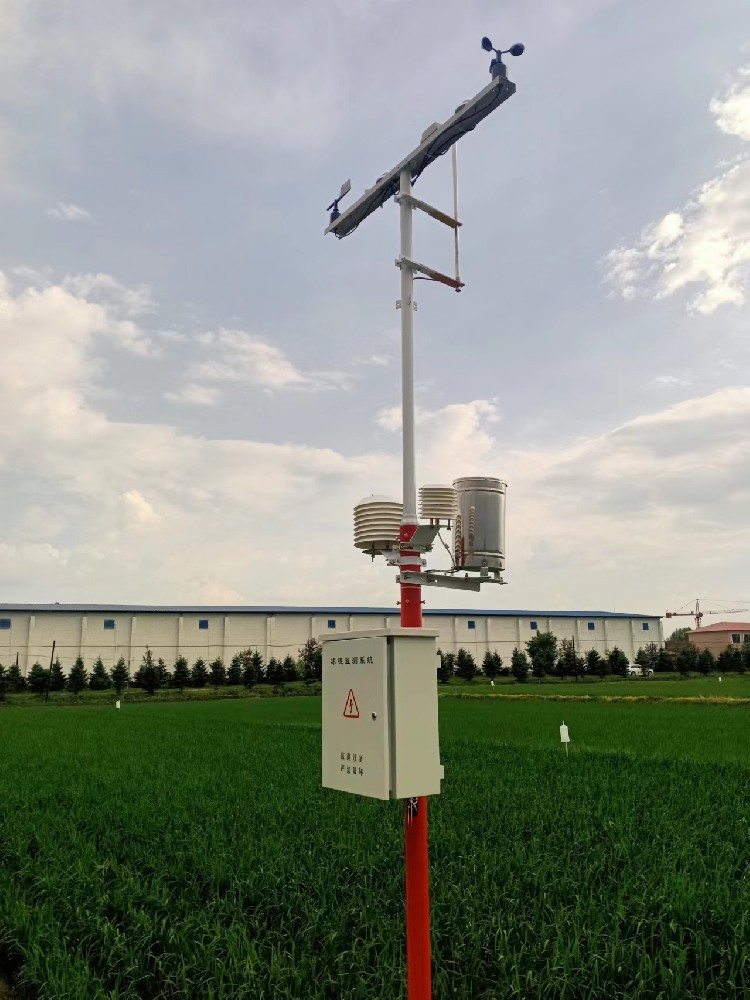

— Blogs —
—Products—
 Consumer hotline +8618073152920
Consumer hotline +8618073152920 WhatsApp:+8615367865107
Address:Room 102, District D, Houhu Industrial Park, Yuelu District, Changsha City, Hunan Province, China
Product knowledge
Time:2022-05-29 14:50:22 Popularity:2457
Agricultural weather station is a highly intelligent automatic monitoring system specifically designed for real-time observation and recording of meteorological parameters closely related to agricultural production. Such equipment is capable of comprehensively monitoring a wide range of meteorological factors in the agricultural environment, including, but not limited to, air temperature and humidity, soil temperature and humidity, wind speed and direction, rainfall, light intensity, barometric pressure and so on.

Agricultural weather station are capable of monitoring a range of routine meteorological elements that are critical to agricultural production. Specifics include, but are not limited to:
- Air temperature sensor: monitors temperature changes over agricultural land.
- Air humidity sensor: Measures the moisture content of the air, which has a direct impact on crop transpiration.
- Wind speed and direction sensor: Assesses the effects of wind on crops such as pollination, water evaporation and disease spread.
- Rainfall sensor: Record precipitation to help determine irrigation needs.
- Soil temperature and moisture sensor: Understanding the heat and moisture conditions of the soil is critical for seed germination and root development.
- Light intensity sensor: Measures the intensity of sunlight, which has a direct impact on photosynthesis and the crop growth cycle.
- Barometric pressure sensor: although less used in direct farming activities, it can be used to predict weather changes.
- Radiation sensor: Includes both direct and scattered solar radiation and has a significant effect on crop photosynthesis.
- Dew point temperature sensor: reflects the degree to which the air is nearly saturated with water vapor and is useful in risk assessment of cold damage to crops.
- Soil conductivity and pH (not meteorological elements but often monitored by such systems) sensor: used to assess soil fertility and suitability.
The agricultural weather station is composed of weather sensors, microcomputer weather data collector, power supply system, light louvered box, field protection box and stainless steel bracket and other parts.
Wind speed and direction sensors are special sensors for meteorology, with high accuracy and reliability. The microcomputer meteorological data collector has meteorological data collection, real-time clock, meteorological data storage, parameter setting, friendly human-machine interface and standard communication functions.

The agricultural weather station is used for all-weather on-site monitoring of a dozen meteorological elements such as wind speed, wind direction, rainfall, air temperature, air humidity, light intensity, soil temperature, soil humidity, evaporation, atmospheric pressure, etc.
It can be connected to a computer through a professional matching data acquisition communication line, and the data is transferred to the meteorological database of the meteorological computer for statistical analysis and processing.
The weather station is developed and supplied by NiuBoL, the instrument is widely used in meteorology, agriculture, environmental protection, airports, agriculture and forestry, hydrology, storage, scientific research and other fields.
The agricultural weather station detects the impact of weather changes on crops and scientifically manages farm planting. The small weather station is special equipment for agricultural bureaus, scientific research institutes, soil fertilizer stations and higher education institutions, and is suitable for standard good fields and water-saving irrigation projects.

Its core value is to enhance the accuracy and efficiency of agricultural production through high-tech means, which is specifically reflected in the following aspects:
1. Real-time monitoring and data provision:
- The agrometeorological station can monitor the microclimate conditions of farmland 24 hours a day, providing real-time meteorological data to help farmers accurately understand the current environmental conditions.
- The data is transmitted wirelessly through IoT technology and can be viewed on the cloud platform at any time, which facilitates data analysis and recording and provides a scientific basis for decision-making.
2. Guiding agricultural production activities:
- Based on the collected meteorological data, farmers can scientifically arrange farming activities such as sowing, irrigation, fertilization, pest control, etc. to improve crop yield and quality.
- By analyzing the data, the planting structure can be adjusted, and crop varieties that are better adapted to the current climatic conditions can be selected to realize precision agriculture.
3. Disaster early warning and risk management:
- Setting threshold alarm system, when extreme weather such as drought, flood, frost etc. is predicted, timely warning is sent to farmers to reduce the damage of natural disasters to agriculture.
- It helps to take measures in advance, such as reinforcing facilities, adjusting irrigation schedules, etc., to mitigate potential losses.
4. Promote agricultural research and development:
- Provide long-term and continuous meteorological data to provide valuable information for agricultural scientific research and help scientists study the impact of climate change on crop growth.
- Support the innovation and optimization of agricultural technology, and promote the sustainable development of agriculture.
5. Intelligent management and remote control:
- The agrometeorological station supports remote setup and fault diagnosis, which reduces manual maintenance costs and improves management efficiency.
- It can be integrated with intelligent irrigation system and soil moisture monitoring to realize automated and intelligent regulation and control of agricultural production environment.
6. Diversified applications:
- In addition to basic meteorological monitoring, modern agricultural weather stations can also expand functions, such as video monitoring, automatic alarms for environmental parameters, and integration with privatized deployments to meet the needs of different scenarios.
In summary, through its advanced monitoring and data processing capabilities, the agro-weather station not only improves the efficiency of agricultural production and reduces risks, but also promotes the progress of agricultural technology and the protection of agro-ecological environment, which is an indispensable part of modern intelligent agriculture.
Prev:Agricultural weather stations can be used to monitor temperature, wind direction
Next:Agricultural weather station [NiuBoL] functional features
Related recommendations
Sensors & Weather Stations Catalog
Agriculture Sensors and Weather Stations Catalog-NiuBoL.pdf
Weather Stations Catalog-NiuBoL.pdf
Related products
 Combined air temperature and relative humidity sensor
Combined air temperature and relative humidity sensor Soil Moisture Temperature sensor for irrigation
Soil Moisture Temperature sensor for irrigation Soil pH sensor RS485 soil Testing instrument soil ph meter for agriculture
Soil pH sensor RS485 soil Testing instrument soil ph meter for agriculture Wind Speed sensor Output Modbus/RS485/Analog/0-5V/4-20mA
Wind Speed sensor Output Modbus/RS485/Analog/0-5V/4-20mA Tipping bucket rain gauge for weather monitoring auto rainfall sensor RS485/Outdoor/stainless steel
Tipping bucket rain gauge for weather monitoring auto rainfall sensor RS485/Outdoor/stainless steel Pyranometer Solar Radiation Sensor 4-20mA/RS485
Pyranometer Solar Radiation Sensor 4-20mA/RS485
Screenshot, WhatsApp to identify the QR code
WhatsApp number:+8615367865107
(Click on WhatsApp to copy and add friends)
